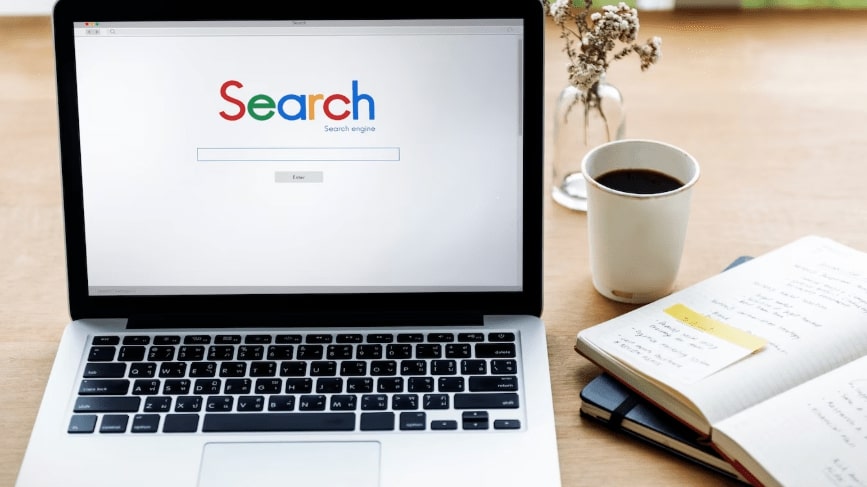In the fast-paced world of digital marketing, the question isn’t whether you should advertise online, but where. Two giants dominate the landscape: Google Ads and Meta Ads (Facebook & Instagram). Choosing between them can feel like a high-stakes decision, and for good reason, your ad spend, your reach, and ultimately your business growth depend on it. This guide is designed to cut through the jargon and give you a clear, actionable roadmap to help you decide which platform is the best fit for your unique business goals here in the Emirates. We’ll break down the core differences, analyze costs, and provide a final verdict to help you make an informed choice.
Why Choosing the Right Ad Platform Matters?
The ad platform you choose is more than just a place to spend your budget; it’s a strategic decision that fundamentally impacts your business. Getting it right can skyrocket your ROI, while getting it wrong can feel like pouring money down a digital drain.
Each Platform Has a Different Strength
Think of it this way: Google is like a direct answer service, while Meta is a social discovery engine. When someone uses Google, they are actively looking for something—a “plumber in Dubai,” a “new iPhone,” or “marketing agency services.” Their intent is clear, and your ad is the direct answer to their query.
Meta, on the other hand, is about showing people something they didn’t know they needed. It’s about interrupting their social feed with an engaging ad for a new product, a local cafe, or an interesting service based on their personal interests and behaviors. Understanding this core difference is the key to mastering your digital strategy.
Matching the Platform with Your Business Goals
Your business goals should be the compass guiding your decision. Are you a new brand trying to build awareness for a revolutionary new product? Or are you a local service provider desperate for immediate leads?
- For Awareness: If your goal is to introduce a brand-new concept, service, or product that people don’t know to search for yet, Meta Ads is likely your best bet. You can build a buzz and create demand.
- For Conversions: If your goal is to capture existing demand and get immediate sales or leads, Google Ads is the go-to. You can place your ad directly in front of people who are ready to buy.
How Ad Channel Affects ROI
The channel you choose directly impacts your return on investment. The cost per click (CPC) and conversion rates can vary dramatically. For example, a high-intent Google search ad might have a high CPC, but a very high conversion rate, leading to a strong ROI. Conversely, a Meta ad might have a very low CPC, but a lower conversion rate, still leading to a positive, but different, ROI. The key is to match your channel to your funnel stage. We’ve explored this dynamic in a previous article, Google Ads or Social Media Ads?, which delves into how these channels fit into different parts of your marketing funnel.
What Are Google Ads and Meta Ads?
For those new to the digital advertising space, let’s start with a simple definition of each platform.
What is Google Ads?
Google Ads is a “pull” advertising platform. It operates on a massive network, including Google Search, the Display Network (millions of websites and apps), YouTube, and Google Shopping. The main mechanism is simple: when a user searches for a specific keyword or phrase, Google shows them a relevant ad. The advertiser only pays when the user clicks on the ad (CPC model).
What is Meta Ads (Facebook & Instagram)?
Meta Ads is a “push” advertising platform. It allows businesses to advertise across Facebook, Instagram, Messenger, and the Audience Network. Instead of relying on user queries, it leverages an incredibly detailed user profiling system. Advertisers can target users based on their demographics, interests, behaviors, connections, and more. Ads are placed directly in the user’s social feed, stories, or videos.
Which Audiences Use Each Platform Most?
- Google Ads: The audience here is universal. Anyone with a question or a need who uses a search engine is a potential customer. It’s not about demographics as much as it is about intent.
- Meta Ads: The audience is more defined by their social habits. In the UAE, Facebook has a broad user base across all age groups, while Instagram is hugely popular with younger demographics and influencers. The audience on these platforms is not necessarily looking to buy, but they are open to discovery and engagement.
Key Differences Between Google Ads and Meta Ads
This is the core of your decision-making process. Understanding these fundamental differences is what will empower you to make the right choice.
Targeting: Intent vs Interest
This is the single most important difference.
- Google Ads (Intent-Based): The user is actively searching for a solution. For example, someone searching for “emergency locksmith Dubai” has an immediate, high-intent need. Your ad is the solution to their problem. This is powerful for converting users who are low in the marketing funnel.
- Meta Ads (Interest-Based): The user is not actively searching. They browse their feed, and you are targeting them based on their profile. For example, a furniture brand can target users in Dubai who have shown interest in “home decor” pages or have recently moved. This is powerful for building brand awareness and creating new demand.
Platform Strengths: Search vs Social Discovery
- Google’s Strength: Capturing Demand: Google is unmatched for capturing users who are already in the market for a product or service. If you know people are searching for what you offer, you need to be on Google.
- Meta’s Strength: Creating Demand: Meta excels at helping you discover a new audience. It’s the perfect platform for new products, fashion, or anything visually appealing that can capture attention in a social context.
Ad Placements and Formats
Both platforms offer a variety of formats, but they are tied to their respective ecosystems.
- Google Ads:
- Search Ads: Text-based ads on Google Search results pages.
- Display Ads: Image or rich media ads on millions of websites.
- Shopping Ads: Product listings with prices and images.
- Video Ads: Pre-roll or in-stream ads on YouTube.
- Meta Ads:
- Image & Video Ads: Single image or video ads in the user’s feed.
- Carousel & Collection Ads: Showcase multiple products.
- Stories & Reels: Full-screen, short-form video ads.
- Messenger Ads: Ads that appear in the Messenger app.
Performance Tracking & Attribution Models
Both platforms offer robust tracking tools, but the data tells a different story. Google Analytics and Google Ads conversion tracking are excellent for measuring direct conversions from a search. Meta Pixel and conversion API are a must-have for tracking user behavior on your site and attributing conversions to your social campaigns. The challenge is often multi-touch attribution—understanding how a user who saw your Meta ad on Monday and then searched for you on Google on Friday should be credited. For a deep dive into tracking, especially in specialized fields like recruitment, a good starting point is understanding how to leverage Google Ads for Recruitment to track a candidate’s journey from a search to a successful application.
Cost Comparison: Which Platform Is More Budget-Friendly?
Budget is a major factor for any business, especially for startups. Here’s a breakdown of the cost differences.
CPC & CPM Differences
- Google Ads: The cost is based on a bidding system for keywords. High-intent, competitive keywords (like “lawyer in Dubai”) can have very high CPCs, sometimes in the range of tens of dollars.
- Meta Ads: The cost is often based on CPM (cost per thousand impressions). Because Meta has a vast, non-intent-based audience, the CPM is generally much lower, allowing you to reach a large number of people for a fraction of the cost of a high-intent Google click.
ROI Based on Industry Type
- High-Value Services: For industries with a high customer lifetime value (e.g., real estate, legal services), a high-cost Google Ads campaign can still yield a phenomenal ROI because a single conversion is worth a lot.
- Retail & Consumer Goods: For businesses selling lower-priced, high-volume products, Meta’s low CPM can be a fantastic way to reach millions of potential buyers and generate a strong ROI.
Which Platform Wastes Less Budget?
The answer is neither. Both platforms can waste your budget if you don’t have a clear strategy. Google can be wasteful with broad keywords. Meta can be wasteful with overly wide targeting. The key to not wasting money is continuous monitoring, A/B testing, and a deep understanding of your audience.
Choosing Based on Business Type
Let’s get practical. Here’s our recommendation based on different business models.
E-commerce Websites
A hybrid approach is highly recommended. Use Google Shopping Ads to capture users searching for specific products (e.g., “Nike running shoes”). Use Meta Ads to build brand awareness, promote sales, and run retargeting campaigns to people who have visited your site. This comprehensive strategy is crucial for any E-commerce Business in Dubai to succeed in a competitive market.
Local Services and Stores
For services like plumbers, dentists, or restaurants, Google Ads is a must-have. You need to capture high-intent local searches (“dentist near me” or “pizza delivery Dubai”). Meta can be used for brand building, special offers, and geotargeted awareness campaigns, but Google is your primary lead generator.
B2B and Professional Services
A combination of both platforms works well. Use Google Ads for capturing high-intent searches (e.g., “IT support for SMEs”). Use Meta Ads to target professionals by job title, industry, and company size on LinkedIn and Facebook. This allows for both immediate lead generation and long-term relationship building.
Startups and Bootstrapped Businesses
For a startup with a limited budget, the choice comes down to your immediate goal. If you need leads now, start with a highly targeted Google Ads campaign. If your goal is to build brand awareness and a community around your new product, start with Meta Ads.
Can You Use Both? Smart Cross-Platform Strategy
The most effective digital strategy often involves a combination of both platforms, working together in a harmonious funnel.
When and Why to Combine Google & Meta Ads
Think of it as a full-funnel approach.
- Top of Funnel (Awareness): Use Meta Ads to reach a cold audience with a compelling video or a brand story.
- Middle of Funnel (Consideration): Use Google Ads to capture users who search for your brand name or a related solution after seeing your Meta ad.
- Bottom of Funnel (Conversion): Use Meta’s retargeting capabilities to show ads to people who have visited your site but haven’t converted yet.
Cross-Channel Funnel Design Tips
A great example is to run a video ad on Instagram for a new product, followed by a Google Search ad that captures people searching for “Brand X new product review.” This full-circle approach ensures you’re engaging with the customer at every stage of their journey. A successful Web Design agency, for instance, might use this to build a brand presence on social media and capture high-intent leads from Google.
How to Balance the Budget Between Two Platforms?
The balance depends entirely on your business goals. A lead-focused business might split its budget 70% Google / 30% Meta, while a new e-commerce brand might do the opposite. The key is to start small, analyze performance, and adjust based on the data.
Running Ad Campaigns in the UAE: Local Considerations
The UAE market is unique and requires a localized approach to advertising.
Consumer Behavior in the UAE (2025 Insight)
The UAE has one of the highest internet and smartphone penetration rates in the world. Consumers are tech-savvy and highly active on social media. They also value brand authenticity and tend to be influenced by local trends and influencers. With a highly diverse population, it’s crucial to understand the different demographics and their behaviors.
Arabic vs English Ads: Which Works Better?
Both are essential. English is the lingua franca of business and is widely used, particularly among the expat population. However, using Arabic ads can build a deeper connection with a large segment of the population, especially for local services. The best strategy is to use both, targeting each language to its specific demographic.
Ad Compliance and Legal Guidelines in the UAE
Ad platforms operate under local laws. In the UAE, this means being mindful of regulations, especially in sensitive industries like real estate, finance, and healthcare. All ads must be truthful, non-misleading, and respectful of local culture.
So, Google Ads or Meta Ads? Final Verdict
Ultimately, the question isn’t which platform is better, but which one is better for you, right now.
Quick Checklist to Decide
- Do people actively search for your products/services? Go with Google Ads.
- Are you launching a new product that no one knows about? Start with Meta Ads.
- Is your primary goal immediate lead generation? Focus on Google Ads.
- Is your primary goal building brand awareness? Focus on Meta Ads.
- Do you have a visually appealing product? Leverage Meta Ads.
Our Recommendation Based on Your Needs
Our final verdict is this: don’t think of it as an “either/or” choice, but a “when and why” decision. Start with the platform that best aligns with your most pressing business goal. Once you’ve mastered that, consider a smart, cross-platform strategy to maximize your reach and dominate your market.
Conclusion
Navigating the choice between Google Ads and Meta Ads can be complex, but by understanding their core differences and aligning your strategy with your business goals, you can make a powerful and profitable decision. The most successful businesses in the UAE don’t just pick a platform; they develop a sophisticated understanding of their audience and the digital ecosystem. For expert guidance in crafting a strategy that works for you, the team at HDM AGENCY is here to help you get the most out of your ad spend and achieve your business goals.
FAQ
- How much budget do I need to start? You can start with as little as AED 500-1,000 per month on either platform. The key is to start small, test, and scale up as you see positive results.
- What is the biggest mistake businesses make with Google Ads? The most common mistake is using broad keywords that attract irrelevant clicks, wasting a significant portion of the budget.
- What is the biggest mistake businesses make with Meta Ads? The most common mistake is having a vague targeting strategy, leading to a low engagement rate and poor ROI.
- Should I use both platforms from day one? A: If you have a limited budget, it’s often better to start with one platform, master it, and then expand to the other. A combined strategy is most effective when you have the resources to manage both properly.








